Our Garden - Outstanding Wildlife Site for 2020
In this section we normally review some of the places we visit that are famous for their wildlife and natural beauty and, at the time of writing this, we should have been well into our preparations for departure to France for our annual ‘orchid hunt’. This year, the plan was to drive south towards the Mediterranean and stay in a holiday rental house close to the ancient town of Lodeve. This area is quite literally smothered in wildflowers and has a reputation for its abundant orchid species and, in particular, the number of wild orchid hybrids which fascinate so many of those lovers of these enigmatic flowers.
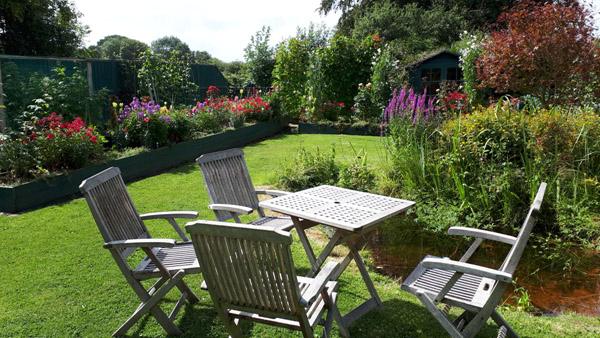
Our garden during the Coronavirus lockdown. To the left is a barely visible frame and net covering part of the vegetable garden where the wildlife is not so welcome!
Instead, we are in ‘lockdown’, ‘confined to barracks’, under ‘house arrest’ or however you wish to name the state of affairs brought about by the unwelcome arrival of the Coronavirus. Living as we do in rural West Wales we count our blessings every day - we have a garden, and we are also able to walk out of our house and into the countryside for our so-called exercise walks. In truth, these walks resemble as they always have a wildlife ramble rather than a boot-camp exercise march.
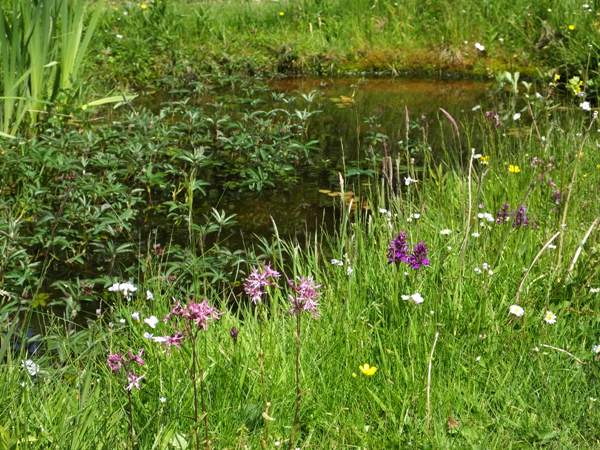
The margin of the pond is managed as a wildflower meadow and is a haven for pollintaing insects.
To us the countryside is not an outdoors treadmill, a substitute for the one in the gym which can no longer be visited, but a place where you can see, hear, learn and enjoy all that it has to offer - exercise with added benefits. The enforced stay at home has reminded us of how wonderful our local countryside can be, with banks of celandines, primroses, violets, bluebells and campion all within a couple of minutes stroll from the house. The birdsong is also impressive, and it has been interesting to hear the evidence of the arrival of the migrants even though we often cannot see them as the trees become leafier.
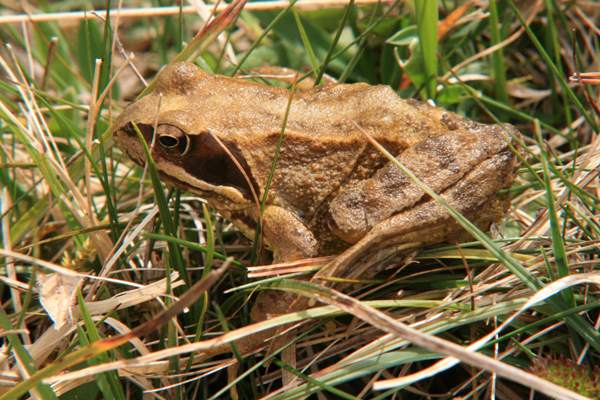
A frog: one of the pond residents more often heard than seen, but only in really warm weather
Our walks are, of course, limited to the one hour of exercise permitted each day, and so for the other waking hours we have turned our attention to the garden. For 2020 it has become our outstanding wildlife site, one in which we will build on what is already there to make it an even more valuable place for the animals and plants that have chosen to take up residence with us.
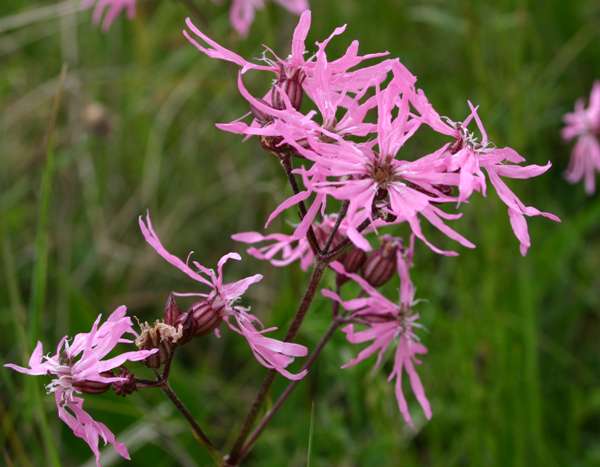
Ragged Robin flourishes in the damp margins of the pond.
The garden is probably best described as a modern take on the traditional cottage garden; one where vegetables and flowers grow together. This year, of all years, the vegetable growing has taken on an added significance and we hope to be able to grow enough to share some of the bounty with other elderly villagers who cannot, for safety reasons, go out shopping themselves. While many of the cultivated flowers, and particularly the herbs, attract insects it is the small man-made pond in the centre of what passes for a lawn that is ‘wildlife central’.
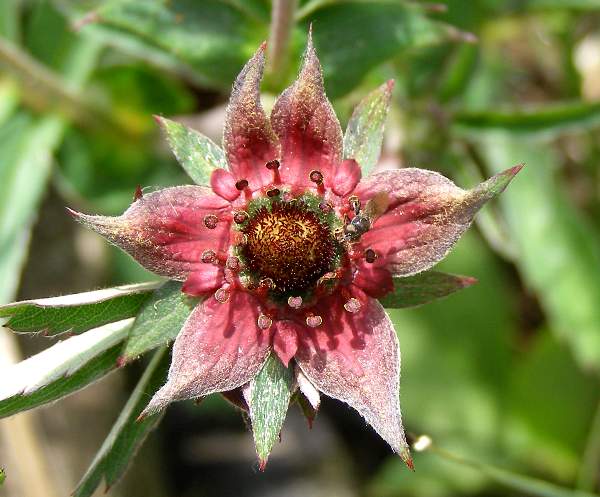
Marsh Cinquefoil is a beautiful flower that lives in and around water. In the wild is becoming less common due to habitat destruction.
When we moved to this house much of the ‘garden’ was concrete hard-standing and gravel with little or no soil. We got rid of it all, except for a small area of concrete on which we placed a greenhouse. In the centre of what was to become grass (it could hardly be called a lawn) we dug a hole 6 by 4 metres varying in depth up to 50cm which we lined with a plastic liner bought from a garden centre. We then filled the pond with water and waited to see which plants, insects and other creatures would arrive to take up residence or visit the new ‘facility’. At the same time we researched the native plants we could introduce to the pond ourselves to improve the chances of attracting more wildlife and increasing the overall biodiversity of the garden. The right aquatic plants are vital for oxygenating the water and keeping it clear, especially if it is situated, as ours is, in full sunlight.
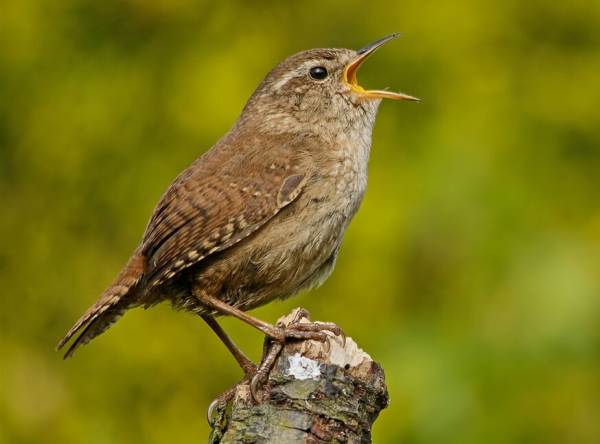
Wrens nest in the ivy covering an old wall at the side of the house. For such a small bird it has an amazingly loud song.
It is hard to imagine what could arrive in a completely empty man-made pond but within 24 hours it was buzzing with small midges and being visited by a whole range of other insects, birds and other animals which were already in the area.
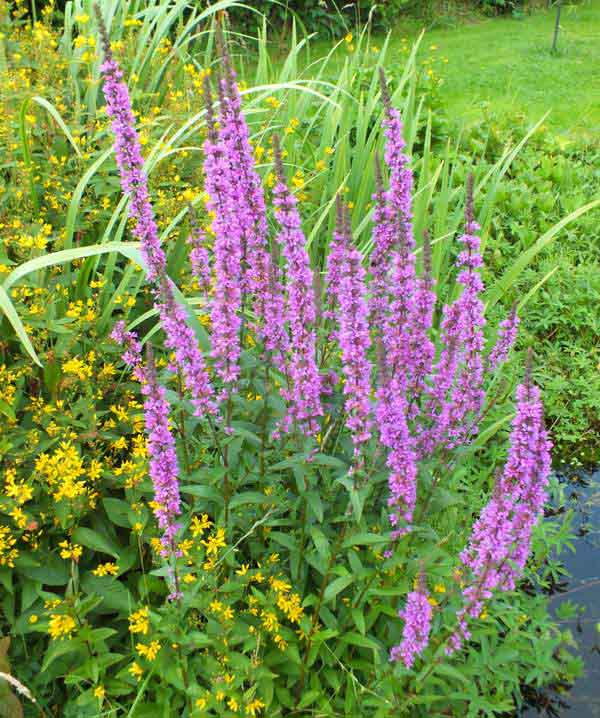
Purple Loosestrife thrives in pond margins.
We had been careful to have a ‘shallow end’ and to surround the pond with turfs of grass which would eventually create a natural-looking edge. Shallow water encourages birds to visit both to drink and bathe all year around. In wintertime our small pond attracts a band of noisy starlings who come to bathe and squabble amongst themselves every day.
This year we have watched the pond as it transitions from winter, through spring and into summer; for sheer entertainment sitting quietly beside it beats the awful tyranny of daytime television any day. The lives of the occupants as they hatch, match, feed and fight is as dramatic as any soap opera.
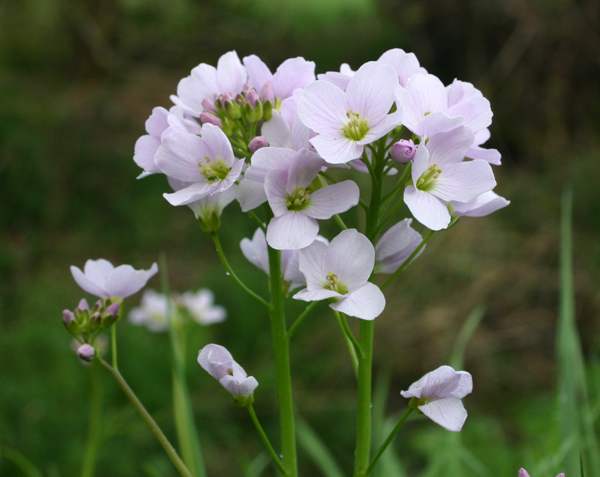
Lady's Smock is one of the main larval food plants of the Orange-tip Butterfly; its flowering coincides with the appearance of the butterfly in springtime.
We have managed the pond margin as a mini wildflower meadow which we are now extending outwards to take over more of the small grassy area. The flowers that are now thriving there include Yellow Rattle, Cuckooflower, Ragged Robin, Marsh Marigold, Snake’s-head Fritillary, Flag Iris, Yellow Loosestrife and Purple Loosestrife as well as the buttercups and daisies found in most well-neglected lawns. Some of the plants growing in the pond itself are Marsh Cinquefoil Comarum palustre, Fringed Waterlily Nymphoides peltata, Bogbean Menyanthes trifoliata, and Water Mint Mentha aquatica. Although the more aggressive of these plants require some judicious pruning in the once-a-year pond maintenance session. they live together in harmony with no particular species becoming dominant at the expense of the others as would happen if invasive alien plants were used.
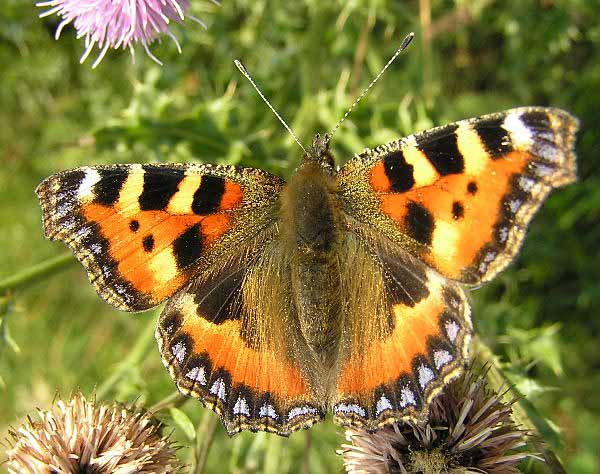
Small Tortoiseshell Butterflies are frequent visitors to the garden.
This mini wildflower meadow hosts countless pollinating insects, and attracts several kinds of butterflies and moths that favour particular plants as suppliers of nectar and pollen or which are their larval foodplants.
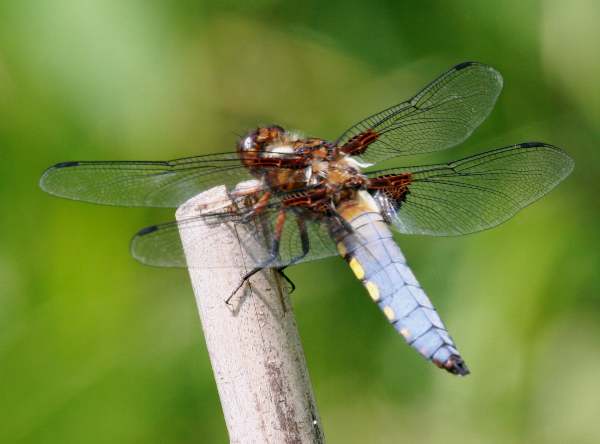
A few strategically placed sticks act as perches for the damselflies and dragonflies that visit to find mates and then lay their eggs in the pond. An example is the male Broad-bodied Chaser pictured above.
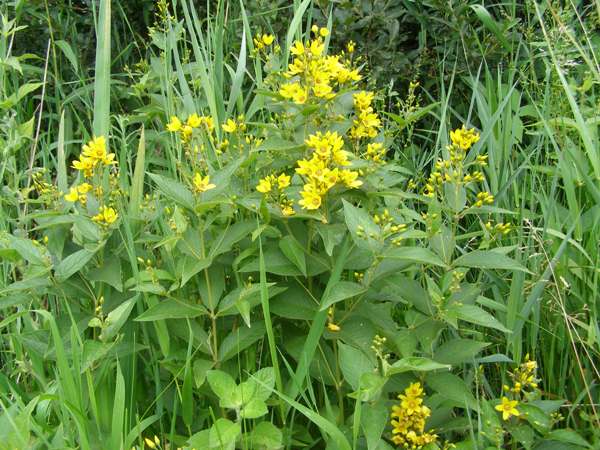
Wild Yellow Loosestrife looks very different from the garden cultivar.
Early adopters of the pond were frogs, toads and Palmate Newts all of which simply ‘arrived’. Numerous insects appeared within days, and the pond is home to greater waterboatmen, diving beetles, pond skaters and many others.
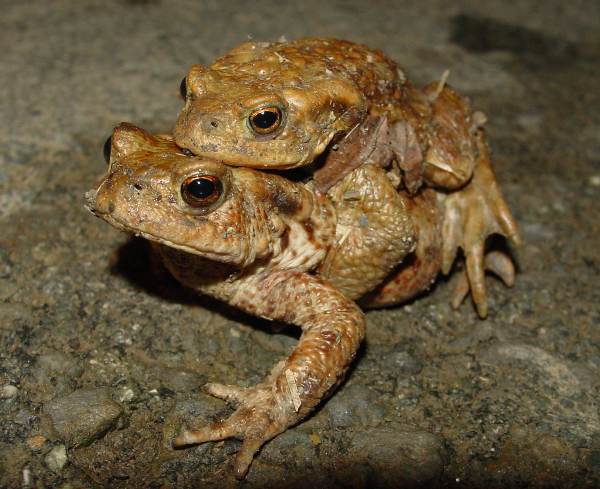
Toads sometimes pair up on their way to a pond to mate and spawn.
During the day birds visit to drink and bathe, and we have many more nests in and around the garden than we did before we constructed the pond. At night bats swoop down over the pond in search of food. Over the years we have had surprise visits from Kingfishers and occasional visits from mallards, who soon decide to move on to more spacious accommodation than our small pond can provide.
How to build a garden pond...
Top of page...